Rocket Software has integrated identity and access management (IAM) capabilities into its terminal emulation software to enable organizations to better secure remote access to legacy applications.
Puneet Kohli, president of the Application Modernization Business Unit for Rocket Software, said by adding support for multi-factor authentication (MFA) and single sign-on (SSO) capabilities to Rocket Secure Host Access software it becomes simpler for organizations to centrally manage access to some of their most mission critical applications.
These additions eliminate the need to acquire and deploy a separate set of IAM tools, which ultimately reduces the total cost of securing applications that, because of their value to the organization, are among the most likely to be targeted by cybercriminals, he added.
In addition, it also makes it simpler for organizations to comply with a range of cybersecurity mandates, such as the Digital Operational Resilience Act (DORA) enacted by the European Union, that are becoming increasingly stringent, said Kohli.
There are more than 2,500 organizations that today rely on Rocket Secure Host Access to enable end users to access green screen applications running, for example, on a mainframe from a PC, he noted. The IAM capabilities being added make it simpler to cohesively secure those application experiences, said Kohli.
Many organizations running legacy applications will overlook legacy application security, simply because there is an assumption that the mainframe is a secure platform. However, in an era where cybercriminals routinely steal credentials to log into applications, remote access software provides a vehicle through which they can gain access to online transaction processing (OLTP) applications that are often at the heart of their business operations.
It’s not always clear who is responsible for securing these applications but as IT operations teams assume more responsibility for security operations, many of the tools and platforms they rely on are being extended in ways that make it simpler to manage security alongside other IT tasks. In fact, one reason that cybersecurity is consuming a larger percentage of the IT budget is the teams responsible for managing it are acquiring and managing tools to make up for security capabilities that are not present in many of the tools used by IT teams. Reducing spending on cybersecurity should free up more funding for IT projects.
Cybersecurity teams may be responsible for discovering and remediating breaches, but the IT operations team should be doing as much as possible to ensure those breaches don’t occur in the first place. The simple truth is cybercriminals are counting on the fact that there is going to be a divide between IT operations and cybersecurity teams that will create opportunities for them to exploit.
Hopefully, as that divide is bridged, the overall state of cybersecurity will steadily improve. In the meantime, IT teams might want to review what tasks are being performed by a cybersecurity team that they might be in a better position to perform. After all, cybersecurity teams already have their hands full. Anything that an IT operations team can do to reduce that burden is only going to help reduce that burden.

